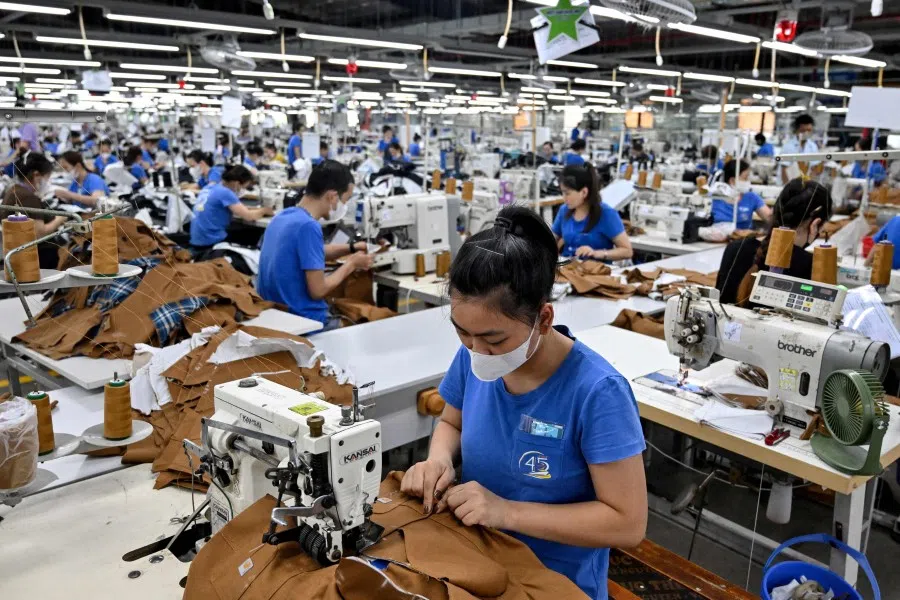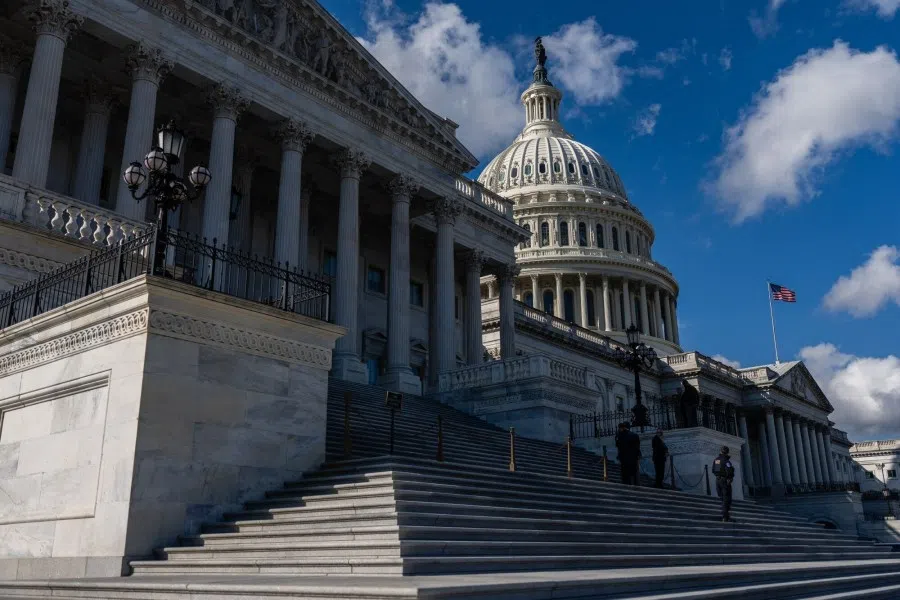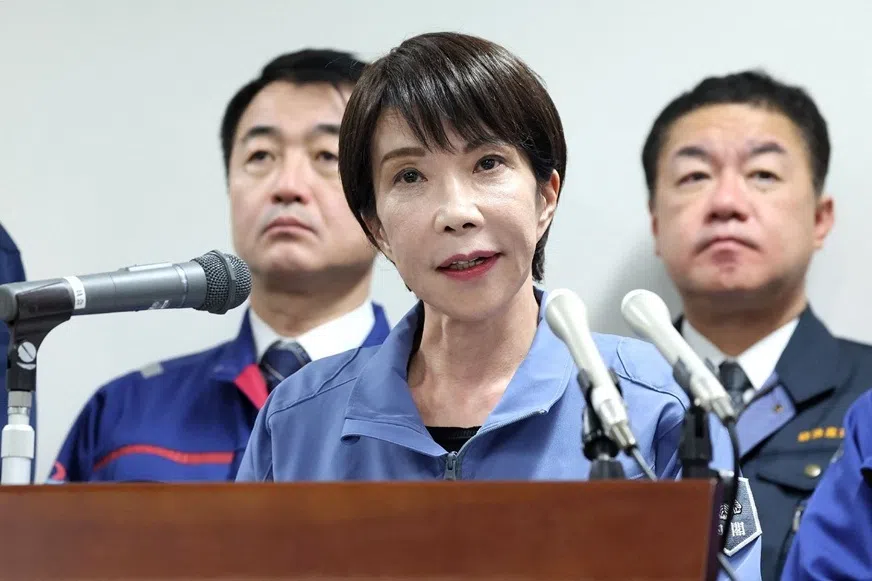A pause before the split? Reading the US-China truce
The meeting between US President Donald Trump and Chinese President Xi Jinping yielded at least one outcome: a truce in the ongoing trade war. Yet far from signalling a thaw, it is better understood as a managed decoupling — a pause that allows both powers to retool, limit exposure and prepare for the next phase of economic rivalry, argues researcher Bo Chen.

The Trump-Xi meeting on 30 October 2025 in Busan, South Korea, marks the most consequential reset of US-China trade relations since the start of the Trump administration’s second term. After months of escalation featuring successive rounds of tariffs, export-control announcements and retaliatory measures on rare earths and high-tech components, a truce in the trade war was finally delivered. The truce temporarily halted new tariff impositions, partially suspended high-technology restrictions and conditionally lifted export controls for the year to come.
What does the truce bring about?
The fact sheet released by the White House on 1 November indicates that the truce’s concessions show that neither Beijing nor Washington secured complete rollback, but both achieved calibrated relief proportional to domestic political and economic constraints.
For the US, a partial de-escalation avoided manufacturing malfunctioning (due to China’s export control on rare-earth and other critical minerals) and the anger arising in farmers, in addition to the inflationary pressure on consumption goods. For China, it won a stable trade relationship, hopefully for a year (albeit still a quite high tariff level) and ensured more access to the US high-tech products, particularly in the semiconductor industry.
Public commentary largely labelled the outcome as a “China victory”...
Public commentary largely labelled the outcome as a “China victory”: Washington appeared to suspend punitive tariffs more extensively, while Beijing maintained most structural boundaries intact. Yet such a reading overlooks the relative baselines against which each side negotiated. When measured from February’s escalation point and compared with concessions Washington extracted from other trading partners, the pattern appears considerably more balanced.
Indeed, the increased tariff after the truce, compared to the baseline in February (before the “fentanyl tariff + reciprocal tariff”), is higher than most of the countries that have struck trade deals with the US. For instance, under the US-EU trade deal, the EU — the second largest contributor to the US trade deficit — faces a reciprocal tariff of 15% with the US. As a comparison, previously the EU faced an average tariff of 1.5% — that is, the EU is now facing a 13.5% tariff increase.

Another example is export-oriented Vietnam. After signing the trade deal with the US, Vietnam is now facing a reciprocal tariff of 20% from the US, while previously the tariff was about 4%. That is, the US tariff increment to Vietnam is 16%.
... the truce is best read not as asymmetric capitulation or triumph, but as a mutual pause optimised for domestic time horizons.
China, however, faces an average tariff of 47% after the truce, according to US President Donald Trump, compared to the 19.5% tariff level set in the US-China phase one trade deal. That is, China faces an increase of over 27%. While some trade economists argue that the average tariff after the truce would be around 41%, instead of 47%, it still means an increment of more than 20%.
Therefore, the truce is best read not as asymmetric capitulation or triumph, but as a mutual pause optimised for domestic time horizons. Trump, entering an election year, required a demonstration of economic pragmatism to soothe market volatility; Beijing needed external calm to stabilise trade and capital inflows to facilitate the domestic economic adjustment. Both objectives converged on an interim détente that neither side mistakes for reconciliation.
Structural reasons why the trade relationship is hard to stabilise
Despite the atmospherics of rapprochement in Busan, underlying structural frictions remain largely unaddressed. The fragile compromise rests atop three enduring fault lines.
Bipartisan hawkishness in Washington
The most notable constraint on durable peace lies in the domestic US political consensus about China. Over the past decade, anti-China sentiment has evolved from a partisan campaign issue into a broad, institutionalised framework spanning Congress, think tanks, and industry associations.
Even as Trump sought to present himself as a dealmaker, Congress continued to legislate a string of China-focused measures, from the proposed Promoting Resilient Supply Chains Act of 2025 to the Protecting American Data from Foreign Adversaries Act. Each passed with overwhelming bipartisan margins, reflecting structural agreement that economic engagement must be conditional on strategic caution.
This legal elasticity means that even after the truce agreed in Busan, the instruments of re-escalation remain within immediate reach.

Amid this environment, any truce negotiated by the executive branch remains vulnerable to congressional review. Should Chinese compliance be deemed insufficient, committees on finance and foreign relations can swiftly demand reinstatement of tariffs under existing statutory authorities.
Furthermore, from the mainstream media and the influential think- anks, the public ecosystem now is more enthusiastic in anchoring a professional policy class committed to sustaining pressure on Beijing rather than coexisting with it. Thus, even temporary moderation of executive policy cannot reverse the underlying mood that defines China not as a peer partner, but as a systemic rival.
The legal elasticity of US authorities
Another source of instability stems from the presidential discretion embedded in the trade statutes used to impose tariffs and sanctions. Both Section 232 and Section 301 confer wide latitude upon the president to determine, justify, and re-impose duties for reasons of national security or unfair trade. Critically, courts have historically deferred to executive assessment of “national interest”.
This legal elasticity means that even after the truce agreed in Busan, the instruments of re-escalation remain within immediate reach. The US Trade Representative’s office retains all procedural groundwork to re-activate suspended duties with minimal notice. In practice, it would require only an executive memorandum asserting “changed circumstances” to reset tariffs. No congressional authorisation or public-comment period is mandatory.
The Trump administration’s post-2024 reorganisations further concentrate this authority. The Office of Strategic Industries and Economic Security, housed within the Department of Commerce, integrates export control and tariff policy functions and has expanded its role, with its reports available also to the National Security Council. This means re-activation of restrictions can occur as a coordinated executive action, not a negotiated process.
... the truce possesses no binding domestic enforcement protection on the US side. For Beijing, this might translate into chronic uncertainty...
Given these legal and bureaucratic dynamics, the truce possesses no binding domestic enforcement protection on the US side. For Beijing, this might translate into chronic uncertainty: firms and investors cannot comfortably rely on tariff stability when future political calculus — or even campaign considerations — can subvert it overnight.
Dual supply-chain decoupling: operational independence as strategic policy
The third limiting condition lies in the simultaneous, deliberate pursuit of supply chain autonomy by both economies. Even while Trump and Chinese President Xi Jinping built some confidence messages in Busan, their respective industrial strategies continued in opposite directions.

On the Chinese side, 2025 saw the rapid implementation of the strategic minerals control regulations and the dual circulation strategies on semiconductor and other high-tech products, which confirmed Beijing’s intent to insulate critical upstream resources — from rare earths to specialty graphite — from foreign leverage. Such measures, though now less urgent under the truce, reflect structural policy rather than short-term retaliation.
In parallel, the US’s industrial strategy — through the CHIPS and Science Act 2.0 and new initiatives to strengthen critical mineral resilience — is expanding incentives for reshoring. Similarly, in semiconductors, Washington’s “friend-shoring” drive has strengthened with allies like Japan and the Netherlands, supplying advanced lithography equipment to US fabs. Beijing interprets such moves as de facto containment, prompting reciprocal emphasis on indigenous chip architectures and open-source hardware innovation.
... the truce could be less a reconciliation than an organised schedule for decoupling.
This mutual fortification generates a paradoxical dynamic: while the truce pauses overt conflict, it might just help each other to buy time for quiet disengagement, where each side uses the breathing space to reinforce domestic resilience and reduce exposure to the other’s leverage. In that sense, the truce could be less a reconciliation than an organised schedule for decoupling.
Carefully managed limits for contact
From a political-economic perspective, the truce illustrates how great-power trade rivalry transforms from tariff confrontation to structural differentiation. The negotiations no longer revolve merely around deficits or currency alignment but concern technological ecologies — who designs, fabricates, and standardises the digital architectures of the future.
In that context, the truce’s limited reach reflects the logic of competitive coexistence, not liberal convergence. Both Washington and Beijing accept coexistence within compartmentalised spheres, which are overlapping but selectively insulated.
The measured concessions — tariff reductions restricted to specific product categories, and export control pauses only for critical products — might indeed demonstrate an emergent doctrine of “bounded interdependence”: a world where the two powers remain connected, but only within carefully managed limits.



![[Big read] Love is hard to find for millions of rural Chinese men](https://cassette.sphdigital.com.sg/image/thinkchina/16fb62fbcf055b710e38d7679f82264ad682ce8b45542008afeb14d369a94399)
![[Big read] China’s 10 trillion RMB debt clean-up falls short](https://cassette.sphdigital.com.sg/image/thinkchina/d08cfc72b13782693c25f2fcbf886fa7673723efca260881e7086211b082e66c)
